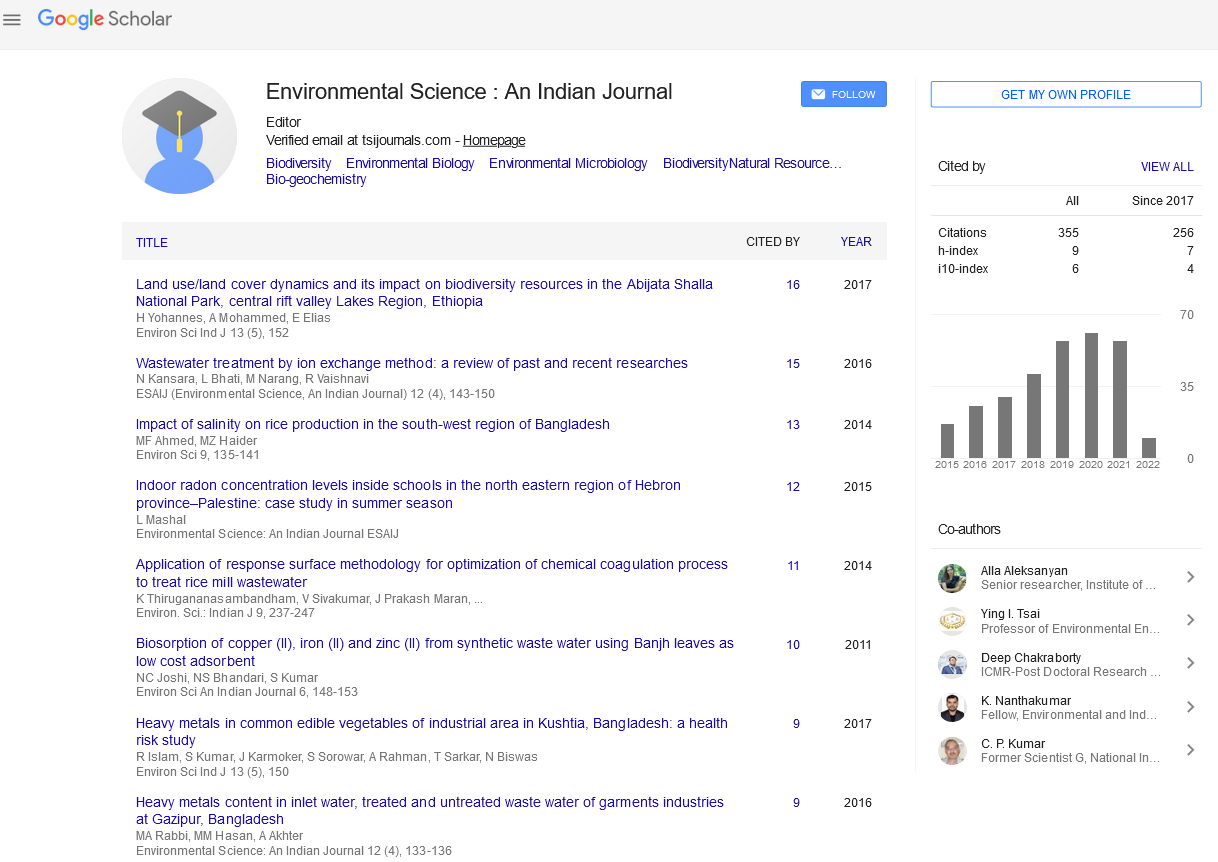Editorial
, Volume: 14( 6)Seawater Intrusion in Coastal Aquifers
- *Correspondence:
- Kumar CP , National Institute of Hydrology, Roorkee-247667, Uttarakhand, India; E-Mail: cpkumar@yahoo.com
Received: December 9, 2018; Accepted: December 10, 2018; Published: December 17, 2018
Citation: Kumar CP. Seawater Intrusion in Coastal Aquifers. Environ Sci Ind J. 2018;14(6):E005.
Abstract
Coastal regions are highly populated areas where more than two third of the world’s population lives. However, due to growing freshwater needs in these coastal areas, there has been indiscriminate and unplanned groundwater withdrawal. Due to over-exploitation of groundwater in these areas seawater has intruded into the freshwater aquifers. This phenomenon of seawater intrusion has become a widespread environmental problem of coastal aquifers.Introduction
Coastal regions are highly populated areas where more than two third of the world’s population lives. However, due to growing freshwater needs in these coastal areas, there has been indiscriminate and unplanned groundwater withdrawal. Due to over-exploitation of groundwater in these areas seawater has intruded into the freshwater aquifers. This phenomenon of seawater intrusion has become a widespread environmental problem of coastal aquifers.
A simple theory that allows a rule-of-thumb estimate of the salt-fresh water interface location is given by the Ghyben-Herzberg relation. It says that for every meter of the freshwater head above sea level, the interface is pushed down 40 m. When the interface touches the bottom of the aquifer, the toe is located. This 40:1 ratio may sound like good news for repelling seawater; however, if pumping activity is increased inland, as quite often is the case due to increased population in coastal zones, the reduced freshwater head level close to the coast will allow seawater to move a large distance landward.
A simple theory that allows a rule-of-thumb estimate of the salt-fresh water interface location is given by the Ghyben-Herzberg relation. It says that for every meter of the freshwater head above sea level, the interface is pushed down 40 m. When the interface touches the bottom of the aquifer, the toe is located. This 40:1 ratio may sound like good news for repelling seawater; however, if pumping activity is increased inland, as quite often is the case due to increased population in coastal zones, the reduced freshwater head level close to the coast will allow seawater to move a large distance landward.
The use of field surveys, such as geophysical and geochemical studies, can reveal the present state of seawater intrusion, and perhaps some insight into its history. It, however, cannot make prediction into the future, and particularly cannot be used for scenario building and impact assessment based on different levels of anthropogenic activities. Mathematical models are needed for these purposes. A solute transport model including advection and dispersion is needed for the modeling. In addition, the salt at higher concentration is an active solute, because it can affect the density of water and can drive the flow. Hence a density-dependent solute transport model should be used.
One of the most effective ways of combating seawater intrusion is to regulate pumping activities. Generally speaking, the amount of groundwater extraction should not be exceeded that of natural replenishment. Optimization of pumping patterns to maximize the yield and minimize the extent of intrusion is a high-priority management issue. Recharge of natural surface water or reclaimed wastewater into aquifers can increase the freshwater outflow rate to push back the seawater wedge. A recharge near the coast can build a local freshwater mound that forms a barrier to protect the water table depression inland. Extraction of seawater in an invaded seawater wedge can also protect the freshwater behind if a proper way can be found to dispose of the extracted seawater.

